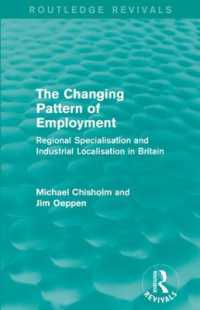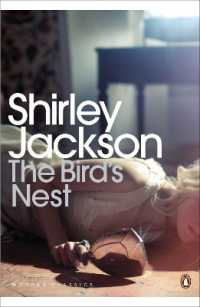Full Description
An essential guide for writers of fiction, poetry, life writing and drama, A Creative Writing Handbook offers expert advice on structuring compelling narratives and cultivating distinctive voices.
Writing, research and editing activities combine with rich and varied examples to help develop the skills and techniques a writer needs. This hands-on approach examines scriptwriting for different media and considers how skills and techniques from one form of writing might usefully cross over to others: how does a short story become a film? How are techniques from scriptwriting employed in novels? And how might poets and life writers fruitfully engage with the strategies of dramatists and writers of prose fiction?
This second edition has been extensively updated with content that reflects current developments in forms such as life writing, flash fiction and audio drama. It includes examples of work by a wide range of writers using a variety of styles and approaches, showcasing the diversity of contemporary writing.
For individual writers, writing groups and courses, and writers' workshops, A Creative Writing Handbook provides:
creative techniques for developing short stories and novels
detailed introductions to stage, audio and film writing
strategies for incorporating dramatic techniques in poetry
thought-provoking approaches to life writing
practical guidance on layout and adaptation techniques for different media
exciting activities to help writers discover new approaches, strengthen their writing, and develop their own practice and voice.
A Creative Writing Handbook has been written by nine published authors and creative writing lecturers who have taught at institutions including the University of Cambridge, the University of East Anglia and New York University.
It is edited by Derek Neale, a fiction writer and dramatist who is Emeritus Professor of Creative Writing at The Open University, and Heather Richardson, Emma Claire Sweeney and Siobhán Campbell, Senior Lecturers in Creative Writing at The Open University, who are variously novelists, short story writers, poets and authors of creative non-fiction.
Contents
Contributors
Introduction
Part 1: Ways of Writing
1. Playing with genre (Derek Neale)
2. Worlds of fiction (Joanne Reardon)
3. Life writing: outer worlds (Lania Knight)
4. Writing narrative poems (Siobhan Campbell)
Part 2: Dramatic Writing
5. Dramatic stories (Dónall Mac Cathmhaoill)
6. Story and image (Dónall Mac Cathmhaoill)
7. Stories in sound (Joanne Reardon)
8. Dramatic journeys (Dónall Mac Cathmhaoill)
9. Adaptation (Dónall Mac Cathmhaoill)
Part 3: Developing Style and Structure
10. Splicing narrative strands (Derek Neale)
11. Life writing: inner worlds (Lania Knight)
12. Dramatic techniques in poetry (Siobhan Campbell)
13. Persuasive techniques: using analogy and rhetoric (Emily Bullock)
14. Voices and voicing (Emma Claire Sweeney)
15. Time and timing (Emma Claire Sweeney)
16. The long and short of it (Emma Claire Sweeney)
17. Thematic connections (Heather Richardson)
Part 4: Readings
Glossary
Acknowledgements
Index







